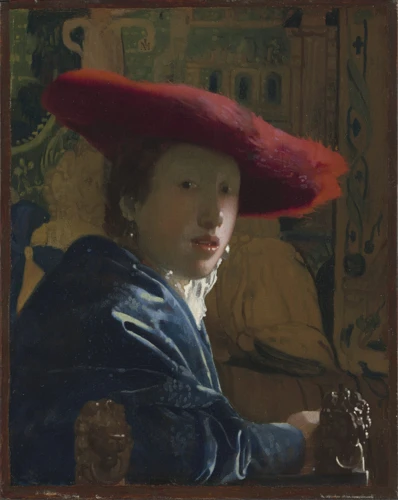When it comes to revamping your living space, swag textured painting emerges as a trendy and inventive method to breathe new life into your walls. This unique approach to interior decorating not only adds depth and character to a room but also allows for personal expression through a variety of techniques and designs. In this expansive guide, we’ll delve into how to create eye-catching walls with textured painting technique, ensuring your home stands out with style and panache.
The Basics of Textured Painting Technique
What is Textured Wall Paint?
Embracing the beauty of relief and tactile experiences, textured wall paint is a specialized medium designed to give your walls a dimensional quality. Unlike flat paint, its composition includes materials that provide a raised surface, offering a canvas for creativity and a break from the monotony of smooth walls.
Tools and Materials Needed for Textured Painting
Before embarking on your DIY textured paint journey, gathering the correct tools and materials is crucial. You’ll need items such as:
- Textured paint or additives to mix with standard paint
- Paint rollers and brushes
- Trowels or putty knives
- Stencils or stamps for patterns
- Protective gear such as gloves and eyewear
With these in hand, you’re set to create a masterpiece on your walls.
DIY Textured Paint: A Step-by-Step Guide
Preparing Your Walls for Texture
Clean and smooth surfaces are the foundation for excellent results. Begin by washing your walls and filling any holes or cracks. Sanding may be necessary for a consistent base upon which to apply your textured paint.
Applying the Base Coat
Starting with a uniform base coat is vital for color consistency. Select a shade that complements your desired top layer and apply it evenly. This step acts as a primer for the textured layer to adhere to.
Creating the Texture with Tools and Techniques
This is where the magic happens in the textured painting technique. Utilize your trowels, brushes, or sponges to dab, swirl, or drag the paint across the surface to form patterns and textures that appeal to your style.
Adding Color and Swag to Your Texture
Once the base texture is applied, infuse it with personality by layering colors. Techniques like sponging, rag-rolling, or color washing can add depth and swag, transforming your walls into a statement piece.
Drying and Sealing Your Textured Paint
After your creative session, allow the paint to dry thoroughly. To protect your work, applying a sealant is advisable, especially in high-traffic areas or where walls are prone to moisture.
Texture Painting Tutorial for Beginners
Understanding the Different Types of Textures
Textures vary from subtle orange peel to dramatic popcorn effects. Familiarizing yourself with the various options will help you select the perfect texture for your space.
Easy Texture Painting Techniques to Try at Home
For those new to interior texture painting, starting with straightforward techniques such as combing or stippling is recommended. These easy texture painting methods can yield stunning results without overwhelming beginners.
Wall Texture Design and Ideas
Incorporating Swag Textured Painting into Interior Design
Swag textured painting can be an integral part of your interior design, setting the mood or accentuating furniture and decor. Choosing a texture that complements your room’s aesthetic is key to a cohesive look.
Decorative Texture Painting Ideas for Every Room
Each space in your home can benefit from the charm of decorative texture painting. From a serene bedroom with a soft sand texture to a vibrant living room with bold geometric patterns, the possibilities are endless.
Advanced Textured Painting Techniques
Combining Textures for a Unique Look
Experienced artisans may enjoy the challenge of blending different textures for a bespoke wall finish. A harmonious fusion of techniques can result in a wall that is truly one-of-a-kind.
Tips for Achieving Professional-Level Texture Painting
For a flawless finish, practicing your technique, maintaining a steady hand, and keeping a wet edge are all part of the process. Attention to detail will elevate your work to a professional standard.
Maintenance and Care for Textured Paint Surfaces
Preserving the allure of your textured surfaces involves regular dusting and gentle cleaning. Avoid abrasive materials and harsh chemicals to maintain the integrity of your textured walls.
If you’re looking to expand your painting skills and explore different techniques, you might find our guide on the Swag Textured Painting Technique incredibly useful. For those who love DIY projects, our article on DIY spray painting furniture can help you give a fresh look to your old furniture pieces. Meanwhile, our exploration of fan brush versatility in painting will show you how to create stunning textures and patterns with this unique tool. And don’t forget about safety – check out our tips on DIY ventilation for painting to ensure your creative endeavors are not only successful but also safe.
Conclusion: Unleashing Your Creativity with Swag Textured Painting
In the world of home decor, swag textured painting stands out as an exciting way to express your individual style while adding a tactile dimension to your walls. With the guidance provided in this post, you’re well-equipped to start your textured painting adventure. Remember that each stroke is a reflection of your creativity, so embrace the process and watch as your walls transform into works of art.

